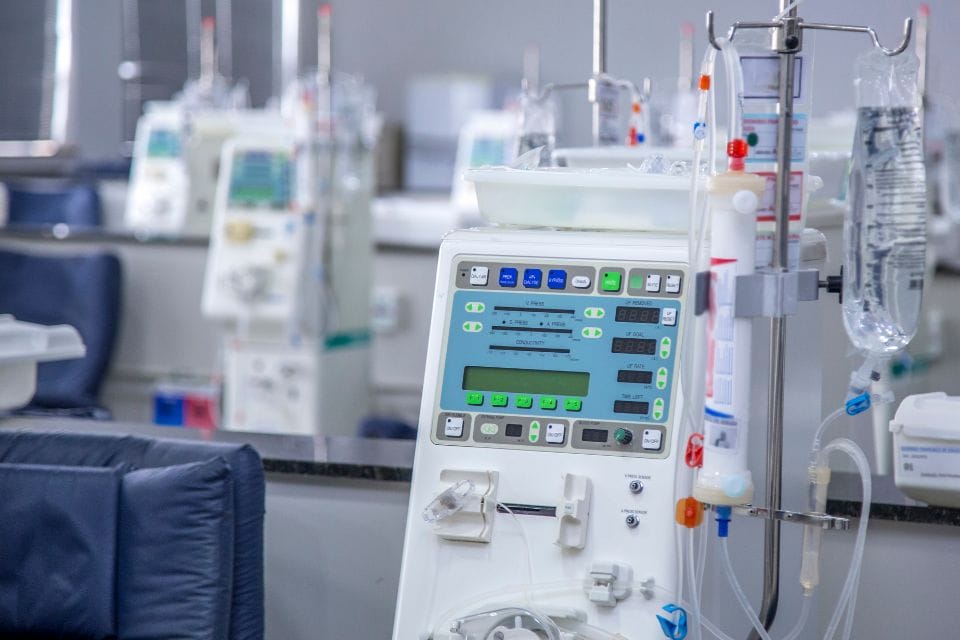In 2018, over 2 million people received hemodialysis worldwide.
While that number is high, it is not entirely unexpected. After all, an estimated 90% of all dialysis patients are undergoing this treatment.
Are you or anyone you love among that number?
If you’re just about to start hemodialysis, you might have asked yourself some of these questions:
What is hemodialysis?
How does it work?
What's a hemodialysis access and why are there so many types?
Which one should I have?
These are some of the things we will be talking about in this article. So if any of those questions feel relevant to you, read on! This article is for you.
What is hemodialysis and when do you need it?

Dialysis, or another type of renal replacement therapy, is advised when your remaining kidney function is only at 10-15%. Waste materials accumulate in the blood if the kidneys cannot filter them out. Left unchecked, these waste materials can become toxic to your body.
For patients in this situation, treatment isn't just recommended, it's essential. And the most common option presented is hemodialysis.
Hemodialysis involves filtering wastes and excess water from your blood. It is one of two main types of dialysis; the other one is peritoneal dialysis, which is a lot less common.
How does hemodialysis work?
To perform hemodialysis, you need at least these two things: a dialyzer and a dialysis machine.
The dialyzer is the filter that actually cleans your blood. It contains a cleansing fluid called dialysate. Separating this dialysate and your blood is a very thin membrane.
This membrane acts a lot like a microscopic sieve. Proteins, blood cells, and other materials remain in your blood since they are too big to pass through. But the smaller waste products can pass through the membrane with no issue. They move from your blood into the dialysate and are then removed from your body.
The dialysis machine pumps blood from your body and into the dialyzer. You are connected to the machine through a hemodialysis access. Before dialysis can begin, doctors need to create this access through minor surgery.
We'll talk about hemodialysis accesses more in the next section.
What is a hemodialysis access?
A hemodialysis access is an entrance to your blood vessels and a way to "access" your blood for treatment. It serves as an entrance to your arteries and veins.
The creation of an access is actually the first step when you begin hemodialysis. Without one, blood cannot pass from your body into the dialysis machine and the dialyzer.
There are three types of hemodialysis access. They all require minor surgery, but there are differences with each one.
What are the types of hemodialysis access?
The first two are arteriovenous (AV) access types. The word arteriovenous means that it involves connecting an artery and a vein.
1. Arteriovenous (AV) fistula
On their own, arteries and veins are not the best for hemodialysis access. Veins usually aren't large enough or have a strong enough blood flow. Arteries are larger and have better flow, but they also have very rigid walls that can make access difficult.By connecting a vein and an artery directly with each other, an AV fistula is created. Blood from the artery flows into the vein, causing it to become larger and more usable for hemodialysis.
Many consider the AV fistula as the best type of hemodialysis access. It generally lasts longer and is less prone to complications, like clotting and infection.
But one major drawback is that, on average, an AV fistula takes around 4 months to heal and settle. During this time, you cannot use it for hemodialysis yet.
2. Arteriovenous (AV) graft
Sometimes an AV fistula is not an option, like when a patient's veins are too small or fragile due to other medical conditions. In these cases, when a fistula is not likely to settle properly, an AV graft is the next best thing.
Unlike a fistula, creating an AV graft doesn't involve connecting an artery and vein directly to each other. Instead, a small synthetic tube (the actual "graft") works as a connector between them. One end of the tube is attached to a vein and the other to an artery. Blood then flows through the tube, and this resulting AV graft is strong enough to use repeatedly for hemodialysis.
And although an AV graft doesn't last as long as a fistula and is more prone to clotting, it still has some advantages.
One is that it's easier to implant. Another is that it heals much faster. An AV graft can be ready for hemodialysis at around 3 to 4 weeks (compared to 4 months for a fistula). There are even “early use” grafts that shorten this waiting time to a matter of days.
The third type of access is a central venous catheter (CVC). As the name suggests, this only requires surgery to a vein.
3. Central venous catheter (CVC)
One thing both AV access types have in common is that they need time to settle before use. If you need to start hemodialysis right away, then a CVC might be the only option for you.
A CVC is a soft, flexible tube that is placed in a large vein, usually in your neck or sometimes in the chest or groin. This tube connects you directly to the dialysis machine. With a CVC, needles aren't needed for hemodialysis.
Most of the time, a CVC is a temporary option while waiting for an AV access to be ready for use. This is because out of the three access types, CVCs are the most prone to infection.
The three types of hemodialysis access all have their own pros and cons. Many recommend an AV fistula, since it tends to last longer and have fewer complications.
But if you need to use an AV graft or CVC, don't be too worried! These can be just as effective. And with proper care and maintenance, the risk of infection and other complications can be minimized.
Final Notes
In this article, we've defined hemodialysis, looked into how it works, and explored the three access types. That's a lot of information!
But there’s still a long way to go. What you’ve learned here is just the beginning. Consider this a starting point on your hemodialysis journey!
We hope that you can continue to build on this knowledge, get on the right track, and get the best out of hemodialysis.
AV Fistula Creation
https://www.azuravascularcare.com/medical-services/dialysis-access-management/av-fistula-creation/
The global burden of kidney disease and the sustainable development goals
https://www.who.int/bulletin/volumes/96/6/17-206441/en/
Hemodialysis
https://www.kidney.org/atoz/content/hemodialysis
Hemodialysis Access
https://www.kidney.org/atoz/content/hemoaccess
The Kidney Project: Statistics
https://pharm.ucsf.edu/kidney/need/statistics
Understanding the Different Hemodialysis Access Types
https://www.azuravascularcare.com/infodialysisaccess/hemodialysis-access-types/
